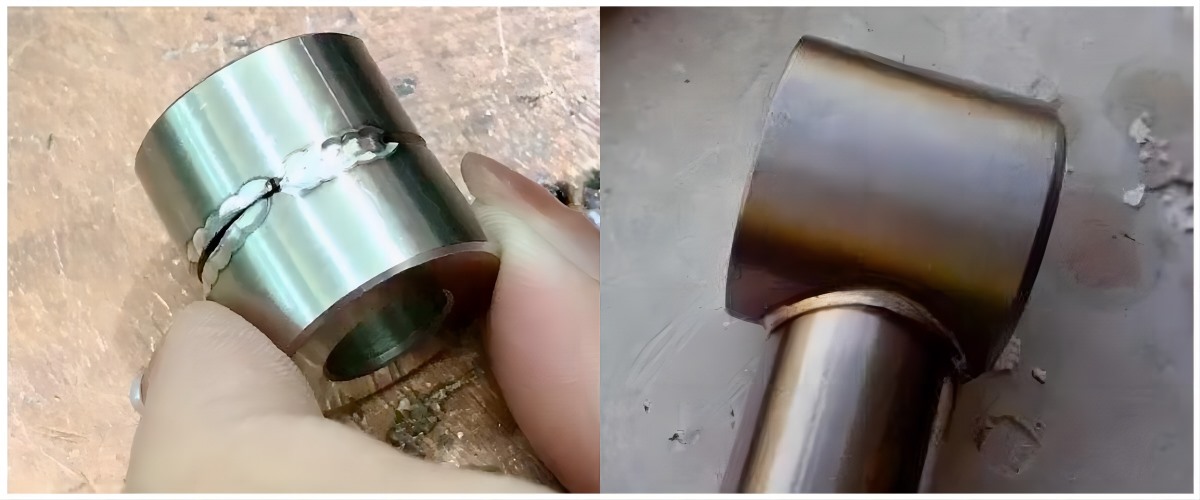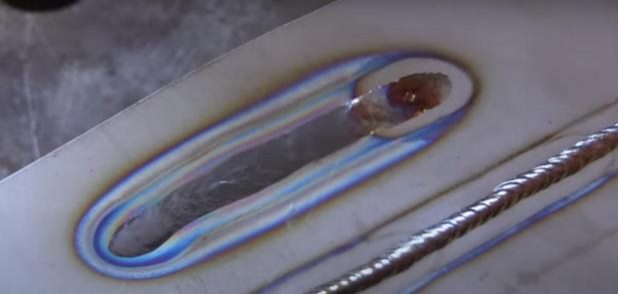Mastering Titanium Welding: Comprehensive Guide and Best Practices
 Sep 26,2023
Sep 26,2023

Welcome to our comprehensive guide on welding titanium, where we will explore various techniques, tips, and advanced practices to help you master the art of welding this exceptional metal. In this guide, we will cover everything from the fundamentals of titanium to the best welding practices, common problems, advanced topics, case studies, safety guidelines, economic considerations, tools.
Fundamentals of Titanium
To understand titanium and its welding properties, it is crucial to grasp its physical and chemical properties. In this section, we will delve into the characteristics of titanium, including its strength-to-weight ratio and its impact on various industries. We will also compare titanium with other metals, such as stainless steel, to understand its advantages and limitations.
Types of Titanium Welding
Not all welding methods are suitable for titanium. In this section, we will explore the most common types of titanium welding and their respective advantages and disadvantages. TIG (Gas Tungsten Arc Welding) is the preferred method for titanium due to its precise control and low heat input. However, we will also touch on other methods such as MIG, Electron Beam, and Plasma Arc Welding, and discuss their applications in specific scenarios.
Welding Titanium AC or DC?
DC polarity is the best option to do welding of this material because in this way you can introduce single way of introducing heat in pool for fusion and production of heat inside weld metal pool for high strength joint. AC polarity cannot do oxide removing mechanism in this welding process due to sensitive nature of brittle titanium compounds present in welding scheme thus only possible solution to this problem is use of direct current electrode system for welding and facing of this material. Another aspect for this material is selection of filler material with matching composition of base metal.
Table.No.1 shows the welding parameters of welding titanium.
| Parameters | Values |
| Frequency | 50 Hz |
| Welding Current | 280 Amp |
| Arc Voltage | 26 V |
| Weld Speed | 0.6 m/min |
Table.No.1. Welding Parameters of Titanium.
Difference between the two types of welding can have understanding at this link of Difference between AC and DC welding.
Best Practices in Titanium Welding
Mastering the best practices is essential to achieve high-quality titanium welds. This section will focus on key considerations in titanium welding, such as material selection, titanium cleaning methods, and tooling recommendations. We will then dive into the welding process itself, covering topics like temperature control, welding speed, technique, and filler metal selection. Additionally,
It is corrosion resistant material with half density as compare to stainless steel but has an equivalent strength of it, thus can offer the same corrosion resistance with half weight of stainless steel and alloy steel with good paint on it. Titanium oxide surface present on the surface of it has great potential to resist thesea atmosphere and chloride fumes because this oxide cannot allow the attacking oxygen to make penetration inside the material. That is why surgical instruments which need high degree of inert reaction with human blood flesh are of titanium material and its alloys with Alumnium.
In this section, we will showcase examples of welding applications in aerospace, medical, and automotive industries, where titanium's exceptional properties, such as its corrosion resistance and high strength, make it a preferred choice. We will also discuss innovations and technological breakthroughs in titanium welding that have paved the way for new possibilities in these industries.
Safety and Health Guidelines
Safety should always be a top priority when working with any metals, including titanium. In this section, we will outline safety measures specific to titanium welding. We will address health risks associated with titanium welding, such as the release of titanium dioxide fumes, and provide preventative strategies and best practices to ensure the well-being of welders and those working in the vicinity.
Economic and Environmental Considerations
Welding titanium can have economic implications for businesses. In this section, we will analyze the cost factors involved in titanium welding projects, including material cost, equipment investment, and labor expenses. We will also explore the environmental impacts of titanium welding and discuss sustainable practices that can help reduce the carbon footprint associated with the welding process.
Tools and Resources
In this section, we will provide a comprehensive list of recommended equipment for titanium arc welding and other welding processes. We will also highlight advanced tools that can aid in achieving precise and efficient titanium welds. Additionally, we will provide a curated selection of learning resources, including courses, certifications, and industry publications, to help welders further enhance their knowledge and skills in titanium welding.
Expert Interviews and Opinions
Insights from industry experts and experienced welders can offer valuable perspectives on titanium welding. In this section, we will showcase interviews and opinions from professionals in the field, discussing their experiences, challenges, and tips for success in welding titanium. We will also explore future trends and predictions in the industry to stay ahead of emerging technologies and techniques.
How to Weld Titanium: 6 Expert Tips
It should have some basic need for welding preparation because in this way this material can get the best possible way of get rid of welding defects, porosity, intermetallic compounds, lack of fusion and lack of penetration.
Tips 1: Reduce Contamination
Contamination can go outside of titanium welding by chemical cleaning, mechanical brushing, hand tool operation and final gas shielding during the complete process, so that ere is no chance of air and hazardous compounds to get in this weld pool. Contamination can also go outside of this material welding by proper selection of gaseous composition and filler material composition during welding process because these aspects can remove chance of formation of brittle compounds.

Tips 2: Low Heat Input
Low heat can introduce less chance of formation of intermetallic compounds at heat affected zone of the titanium material and can produce stresses gradient at level of base metal and weld material. Another aspect of this thing is formation of high complex compounds due to presence of high temperature and little oxygen with high affinity of chemical reaction.
Tips 3: Good Gas Coverage
Gas coverage can determine the quality of your titanium welding because it can provide the protection against chemical compounds which have no good relation with quality of weld and its metallurgy. Thus expert who can determine which titanium weld is best is with which gas coverage rate is the one who can provide best results to you without any use of extra treatment on weld after the completion of process.
Tips 4 : TIG with Right Feature
Onlyweldingtechniquecannotdeterminethat whichfeatureisbestfor yourweldbecause there are so many parameters inside that process which have relation with the quality, qualification and fabrication of weld. Thus to be expert in those parameters you have to get information about that parameters and welding technique.
Tips 5: Keep Optimal Heat Setting
Heat setting is the parameter of welding current, voltage and travel speed because in this way you can determine that which heat is going to the weld pool and which one is making danger to your welding quality. Thus heat setting is also need of an expert to qualify welding titanium joint with narrow zone of HAZ and low chance of brittle material of same base material.
Tips 6: Color Scheme of Weld Joint
Color of titanium joint can also tell you that which weld is acceptable for you and which one is not good for quality titanium joint because in this way you have to decide the rejection and acceptance of final pass of weld. Blue color with light yellowish scheme is not good for your titanium weld joint because this is then indication of formation of that compounds which are not going to anywhere with any post weld heat treatment and pickling / passivation.
Figure.No.2 shows bluish color in Titanium welding which can cause its rejection.

Figure.No.2.Bluish Color in Titanium Welding.
Conclusion
In the final section, we will summarize the key learnings from this ultimate guide and provide a glimpse into the future of titanium welding. We will emphasize the importance of ongoing learning, adaptation to new technologies, and the continuous improvement of welding practices to meet the evolving demands of the industry. Welding titanium requires skill, precision, and knowledge, but the rewards are immense for those who master the techniques and contribute to the growing field of titanium welding.
Why Choose Tuofa for Custom Welding and Machining Services
Professional deal of welding titanium is only possible by use of experience team of welders with welding procedure qualification that is why it is need of titanium industry to choose authentic organization for welding Titanium. Tuofa China is perfect place for this kind of work due to:
1. ISO 9001 Certification.
2. Experienced team of welders.
3. Modern Welding machines.
4. CNC machining facility.
5. Simulation work to calculate stress gradient in welding material.
For instant quotation of titanium welding and quotation, Send part drawings: info@tuofa-cncmachining.com
FAQs about Weld Titanium
Can you Weld Titanium to Steel?
Yes this weld configuration is possible but it can happen only with the use of tantalum interlayer and provision of buffer zone to the titanium material on the side of titanium so that high heat affect comes to titanium material without any damage.
Can you Weld Titanium with Stainless Steel Rod?
Yes this weld is possible but to weld it, filler material of composition having both stainless steel and titanium is need of structure metallurgy because this is the only solution to weld materials of different composition and properties.
Welding Titanium vs Stainless Steel
Titanium is difficult to weld in this case because titanium can have brittle material range of composition metallurgy but on the contrary stainless steel can have weld with any common welding technique and parameters without any use of additional buffer layer.
 Tel/WeChat:
Tel/WeChat:  Email:
Email: 
 Home
Home
 Plasma Cutting Aluminum: CNC Plasma Projects Guide
Plasma Cutting Aluminum: CNC Plasma Projects Guide 







